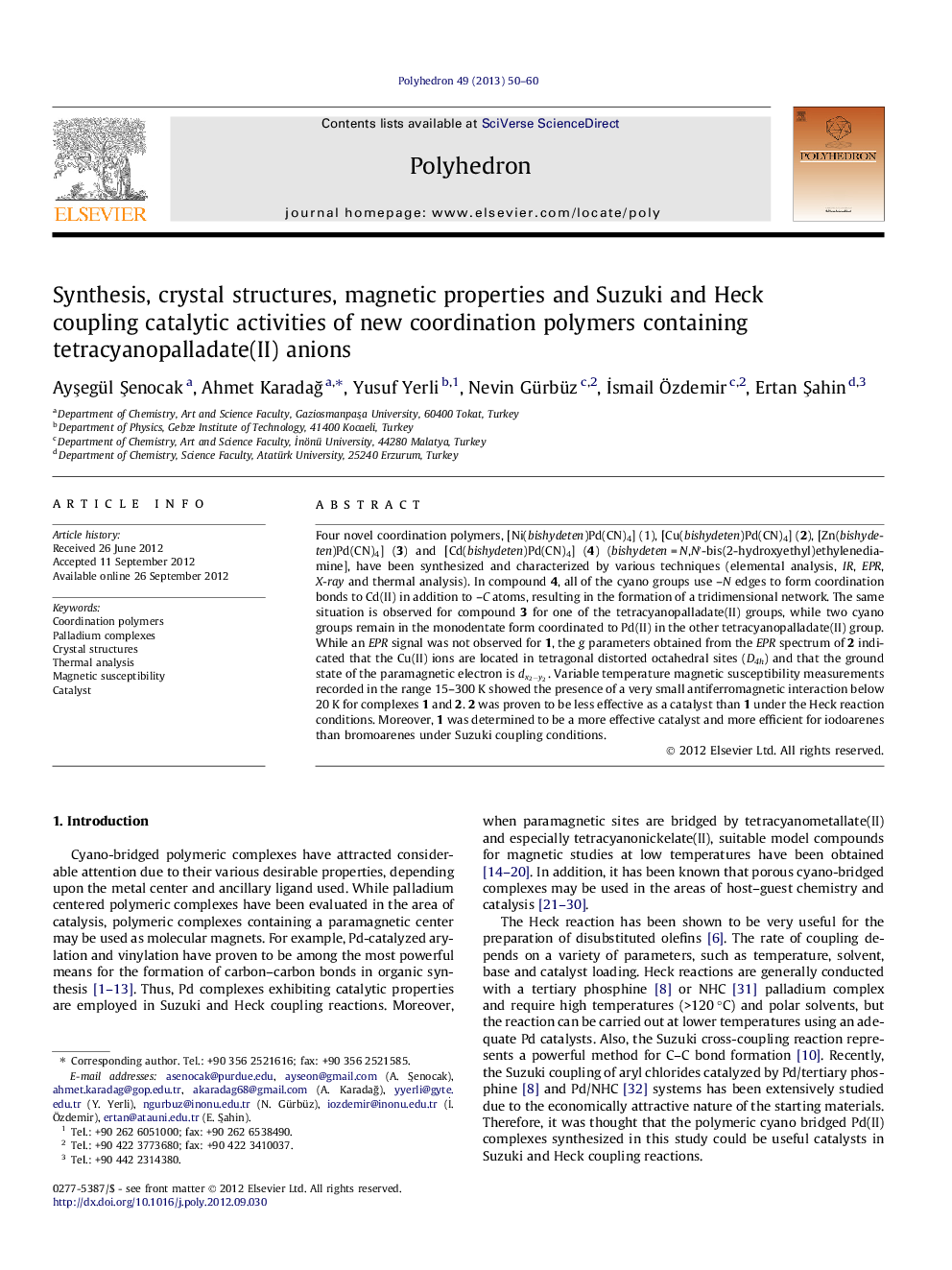| Article ID | Journal | Published Year | Pages | File Type |
|---|---|---|---|---|
| 1338587 | Polyhedron | 2013 | 11 Pages |
Four novel coordination polymers, [Ni(bishydeten)Pd(CN)4] (1), [Cu(bishydeten)Pd(CN)4] (2), [Zn(bishydeten)Pd(CN)4] (3) and [Cd(bishydeten)Pd(CN)4] (4) (bishydeten = N,N′-bis(2-hydroxyethyl)ethylenediamine], have been synthesized and characterized by various techniques (elemental analysis, IR, EPR, X-ray and thermal analysis). In compound 4, all of the cyano groups use –N edges to form coordination bonds to Cd(II) in addition to –C atoms, resulting in the formation of a tridimensional network. The same situation is observed for compound 3 for one of the tetracyanopalladate(II) groups, while two cyano groups remain in the monodentate form coordinated to Pd(II) in the other tetracyanopalladate(II) group. While an EPR signal was not observed for 1, the g parameters obtained from the EPR spectrum of 2 indicated that the Cu(II) ions are located in tetragonal distorted octahedral sites (D4h ) and that the ground state of the paramagnetic electron is dx2-y2dx2-y2. Variable temperature magnetic susceptibility measurements recorded in the range 15–300 K showed the presence of a very small antiferromagnetic interaction below 20 K for complexes 1 and 2. 2 was proven to be less effective as a catalyst than 1 under the Heck reaction conditions. Moreover, 1 was determined to be a more effective catalyst and more efficient for iodoarenes than bromoarenes under Suzuki coupling conditions.
Graphical abstractNew cyano bridged coordination polymers with Pd(II) and M(II) (M = Ni, Cu, Zn or Cd) metals have been synthesized using cyano and N,N′-bis(2-hydroxyethyl)ethylenediamine ligands. The complexes, containing Pd(II)/Ni(II) and Pd(II)/Cu(II) metallic centers, presented a weak antiferromagnetic coupling. Furthermore, the Pd(II)/Ni(II) complex was a more effective catalyst than the Pd(II)/Cu(II)complex for Suzuki and Heck reactions.Figure optionsDownload full-size imageDownload as PowerPoint slide
